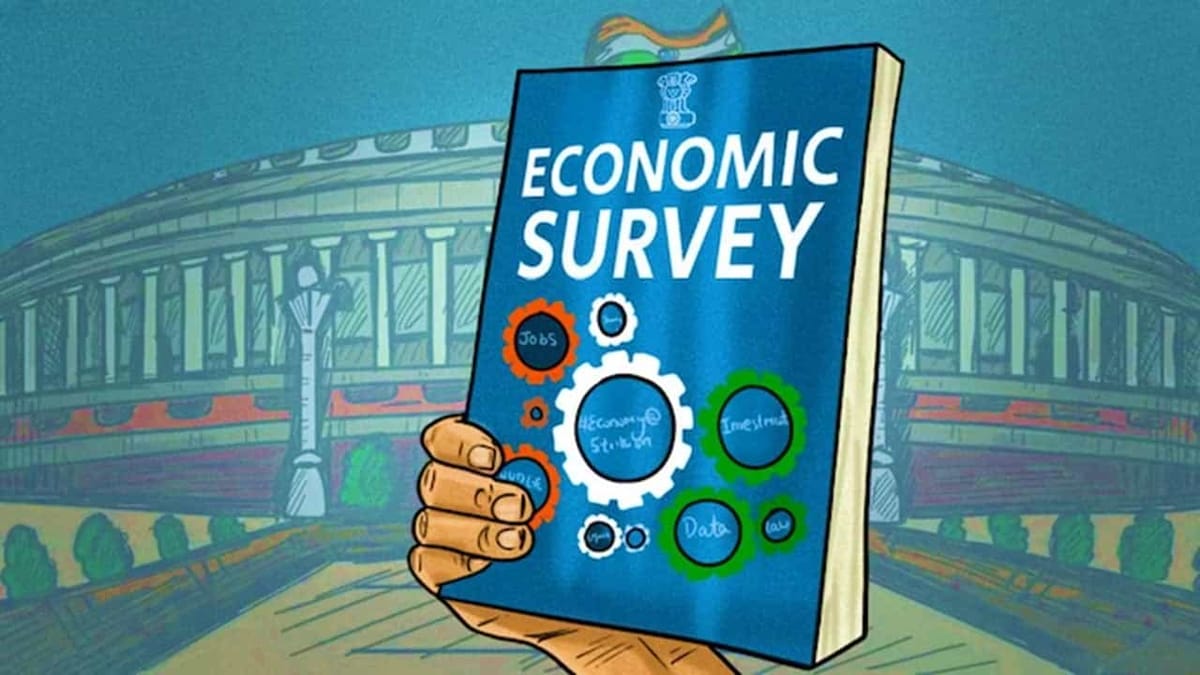Reetu | Jan 31, 2023 |

Summary of Economic Survey 2022-23
Before Presenting the Union Budget 2023-24 on February 1st, 2023, the Finance Minister presented the Economic Survey 2022-23 in the Union Parliament today. The Summary of Economic Survey 2022-23 are as follow:
India to witness GDP growth of 6.0 per cent to 6.8 per cent in 2023-24, depending on the trajectory of economic and political developments globally.
The optimistic growth forecasts stem from a number of positives like the rebound of private consumption given a boost to production activity, higher Capital Expenditure (Capex), near-universal vaccination coverage enabling people to spend on contact-based services, such as restaurants, hotels, shopping malls, and cinemas, as well as the return of migrant workers to cities to work in construction sites leading to a significant decline in housing market inventory, the strengthening of the balance sheets of the Corporates, a well-capitalised public sector banks ready to increase the credit supply and the credit growth to the Micro, Small, and Medium Enterprises (MSME) sector to name the major ones.
Today in Parliament, Smt. Nirmala Sitharaman, Union Minister for Finance & Corporate Affairs, introduced the Economic Survey 2022–23, which forecasts a base GDP growth of 6.5% in real terms in FY24. The prognosis substantially aligns with the projections made by domestically and by multilateral organisations like the RBI and the World Bank, IMF, and ADB.
According to the report, India’s capital investment cycle is anticipated to begin in FY24 as a result of a robust loan disbursal and the improvement of the business and banking sectors’ balance sheets. The development of open-source digital infrastructure and ground-breaking initiatives like PM GatiShakti, the National Logistics Policy, and the Production-Linked Incentive programmes to increase manufacturing output will all contribute to economic growth.
According to the survey, the economy will reportedly expand by 7% in real terms for the year that ends in March 2023. This comes after a growth of 8.7% in the previous financial year.
Despite the three shocks of COVID-19, the Russian-Ukrainian conflict, and Central Banks around the world responding with synchronised policy rate hikes to curb inflation, leading to an increase in the value of the US dollar and a widening of Current Account Deficits (CAD) in net importing economies, agencies around the world continue to project India as the fastest-growing major economy at 6.5-7.0 percent in FY23.
As seen by the lowering urban unemployment rate and the quicker net registration in Employee Provident Fund, private consumption and capital formation, which were primarily responsible for India’s economic development in FY23, helped create jobs. Additionally, the world’s second-largest vaccination campaign, which involved more than 2 billion doses, helped to improve consumer attitudes, which might extend the spending upswing. However, private capex must soon assume the driving force if job creation is to move forward quickly.
It also points out that the upside to India’s growth outlook arises from (i) limited health and economic fallout for the rest of the world from the current surge in Covid-19 infections in China and, therefore, continued normalisation of supply chains; (ii) inflationary impulses from the reopening of China’s economy turning out to be neither significant nor persistent; (iii) recessionary tendencies in major Advanced Economies (AEs) triggering a cessation of monetary tightening and a return of capital flows to India amidst a stable domestic inflation rate below 6 per cent; and (iv) this leading to an improvement in animal spirits and providing further impetus to private sector investment.
According to the survey, the extended Emergency Loan Linked Guarantee Scheme (ECLGS) of the Union government has enabled credit growth for the Micro, Small, and Medium Enterprises (MSME) sector to be extraordinarily high, above 30.6 percent, on average, between Jan.-Nov. 2022. As seen by the quantities of Goods and Services Tax (GST) they pay, the recovery of MSMEs is moving along quickly, and the Emergency Credit Linked Guarantee Scheme (ECGLS) is alleviating their anxieties about debt payment.
In addition to this, the movement in borrower funding preferences away from risky bond markets, where rates have grown, and external commercial borrowings, where interest and hedging costs have increased, towards banks has had an impact on the growth in overall bank credit. Credit growth is projected to be brisk in FY24 if both inflation and the real cost of credit drop in that year.
To Read More – Click Here
In case of any Doubt regarding Membership you can mail us at contact@studycafe.in
Join Studycafe's WhatsApp Group or Telegram Channel for Latest Updates on Government Job, Sarkari Naukri, Private Jobs, Income Tax, GST, Companies Act, Judgements and CA, CS, ICWA, and MUCH MORE!"